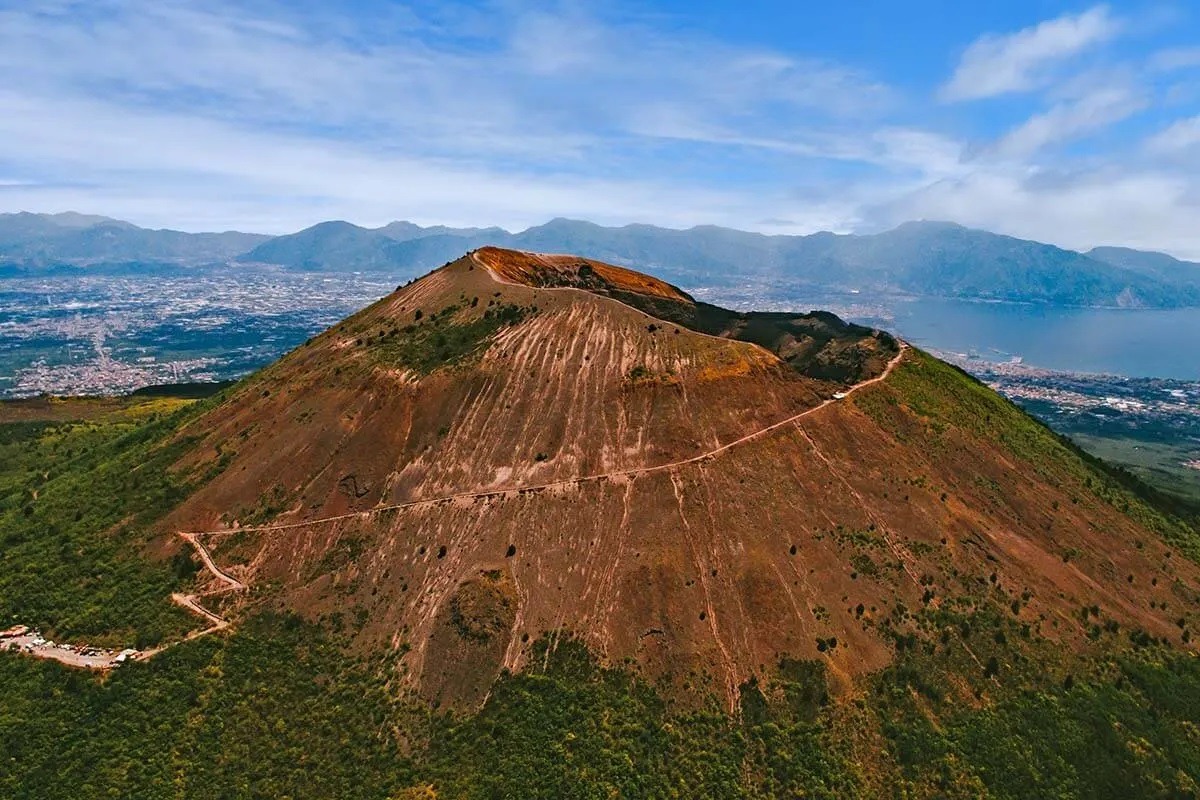
Mt Vesuvius is a famous and formidable volcano located on the Gulf of Naples in Italy. This iconic natural wonder has left an indelible mark on history due to its catastrophic eruption in 79 AD, which resulted in the destruction of the ancient city of Pompeii. Beyond its historical significance, Mt Vesuvius continues to captivate the world with its unique features and intriguing characteristics. In this article, we will explore 10 fascinating facts about Mt Vesuvius, shedding light on its geological marvels and the impact of its eruptions on the surrounding region. From its towering presence to its influence on the local ecosystem, Mt Vesuvius offers a wealth of intriguing details that showcase the power and beauty of the natural world. Join us on this journey as we uncover the captivating allure of Mt Vesuvius through these 10 fun facts.
Key Takeaways:
- Mt Vesuvius, located in Italy, is a famous and dangerous volcano known for burying the cities of Pompeii and Herculaneum in 79 AD.
- With its fertile soil, breathtaking views, and historical significance, Mt Vesuvius stands as a symbol of natural beauty and destructive power in Italy.
Mt Vesuvius is located in Italy.
Mt Vesuvius is a famous volcano located in Italy, near the Bay of Naples. It is known for its devastating eruption in 79 AD, which buried the Roman cities of Pompeii and Herculaneum.
The eruption of Mt Vesuvius in 79 AD was catastrophic.
The eruption of Mt Vesuvius in 79 AD is one of the most famous and catastrophic volcanic eruptions in history. It buried the Roman cities of Pompeii and Herculaneum under a thick layer of volcanic ash and pumice, preserving them in remarkable detail for centuries.
Mt Vesuvius is the only active volcano on the European mainland.
Mt Vesuvius is the only active volcano on the European mainland and has erupted many times since 79 AD. Its last eruption occurred in 1944 during World War II.
It is considered one of the most dangerous volcanoes in the world.
Due to its proximity to densely populated areas, Mt Vesuvius is considered one of the most dangerous volcanoes in the world. Its potential for a large-scale eruption poses a significant threat to the surrounding region.
Mt Vesuvius is part of the Campanian volcanic arc.
Mt Vesuvius is part of the Campanian volcanic arc, a line of volcanoes in Italy formed by the subduction of the African plate beneath the Eurasian plate.
The soil around Mt Vesuvius is incredibly fertile.
The volcanic soil around Mt Vesuvius is incredibly fertile, making the surrounding region ideal for agriculture. It is known for producing excellent wine, thanks to the rich minerals in the soil.
Mt Vesuvius offers breathtaking views of the Bay of Naples.
Visitors to Mt Vesuvius can enjoy breathtaking views of the Bay of Naples from its summit. The panoramic vistas attract tourists and hikers from around the world.
The first recorded eruption of Mt Vesuvius was in 79 AD.
The first recorded eruption of Mt Vesuvius was the catastrophic eruption in 79 AD that buried the cities of Pompeii and Herculaneum.
Mt Vesuvius has a distinctive conical shape.
Mt Vesuvius is known for its distinctive conical shape, which is characteristic of stratovolcanoes. This iconic silhouette adds to its allure and recognition.
The name "Vesuvius" is derived from the Roman god of fire, Vulcan.
The name "Vesuvius" is derived from the Roman god of fire, Vulcan. This association with fire and volcanic activity underscores the historical significance and reverence for the mountain.
Nestled near the picturesque Bay of Naples in Italy, Mt Vesuvius stands as a symbol of both natural beauty and destructive power. This iconic stratovolcano has left an indelible mark on history, particularly due to its catastrophic eruption in 79 AD. The eruption buried the prosperous Roman cities of Pompeii and Herculaneum under a blanket of ash and pumice, preserving them in a hauntingly poignant state for centuries. Mt Vesuvius is the only active volcano on the European mainland, and its potential for a large-scale eruption poses a significant threat to the surrounding region. The mountain is part of the Campanian volcanic arc, a line of volcanoes in Italy formed by the subduction of the African plate beneath the Eurasian plate. Its fertile soil has made the surrounding region ideal for agriculture, particularly renowned for producing excellent wine. Visitors to Mt Vesuvius are rewarded with breathtaking views of the Bay of Naples from its summit, attracting tourists and hikers from around the world. The mountain's distinctive conical shape and its name, derived from the Roman god of fire, Vulcan, further add to its allure and historical significance.
Conclusion
In conclusion, Mt. Vesuvius stands as a captivating natural wonder, steeped in both beauty and historical significance. Its unique geological features and volatile history have made it a subject of fascination for scientists, historians, and tourists alike. From its devastating eruption in 79 AD to its ongoing influence on the surrounding landscape, Mt. Vesuvius continues to captivate the world with its raw power and intriguing mysteries. Whether it's the breathtaking views from its summit or the ongoing scientific research into its behavior, Mt. Vesuvius remains an enduring symbol of the Earth's incredible forces and the resilience of the human spirit.
FAQs
What was the most significant eruption of Mt. Vesuvius?The most significant eruption of Mt. Vesuvius occurred in 79 AD when it unleashed a catastrophic event that buried the Roman cities of Pompeii and Herculaneum under a thick layer of volcanic ash and pumice.
Is Mt. Vesuvius still active today?Yes, Mt. Vesuvius is still an active volcano. While it is currently dormant, it is closely monitored due to its history of explosive eruptions and its location near densely populated areas.
Was this page helpful?
Our commitment to delivering trustworthy and engaging content is at the heart of what we do. Each fact on our site is contributed by real users like you, bringing a wealth of diverse insights and information. To ensure the highest standards of accuracy and reliability, our dedicated editors meticulously review each submission. This process guarantees that the facts we share are not only fascinating but also credible. Trust in our commitment to quality and authenticity as you explore and learn with us.


